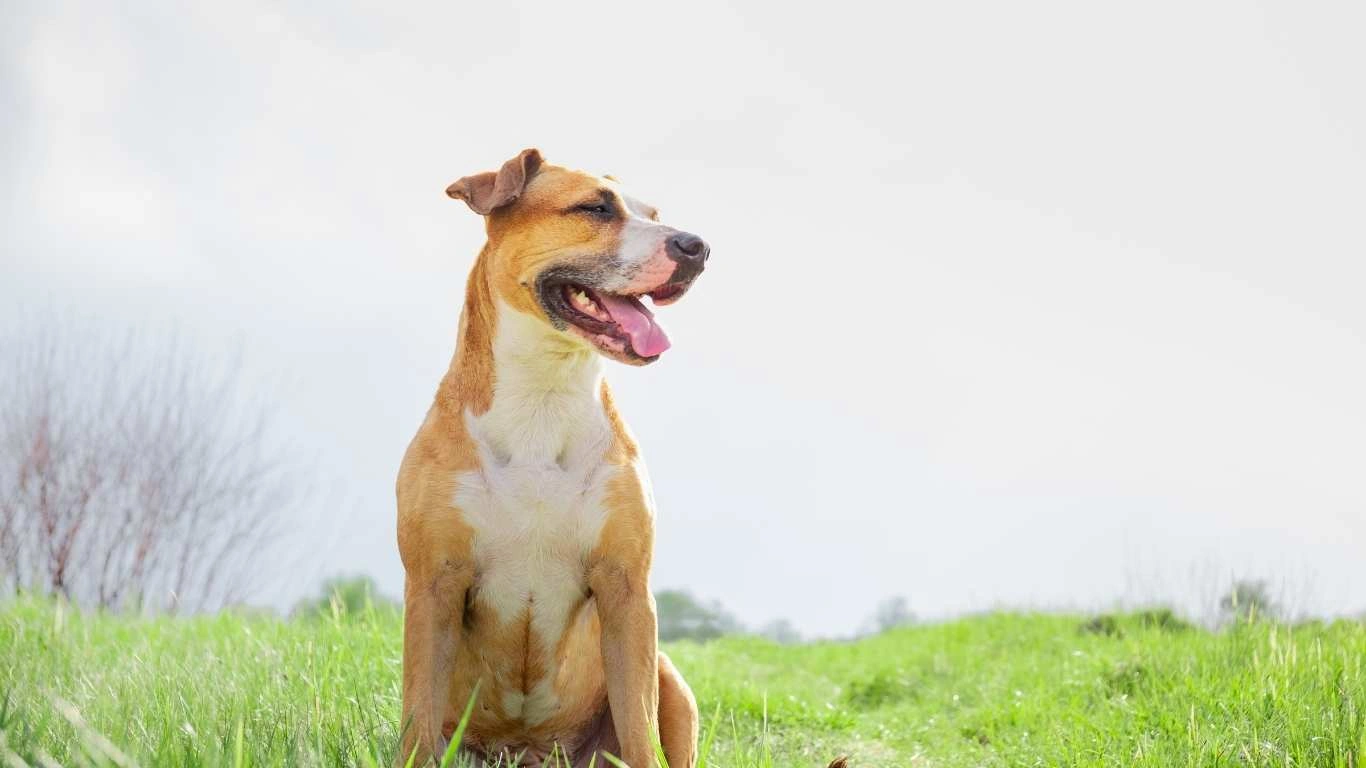Why Can Dogs Eat Pear Cores Is a Risk You Shouldn’t Take
Can dogs eat pear cores? That’s a question I’ve heard a surprising number of times working as an Animal Care Specialist in both shelters and vet clinics. It might seem like a small thing—just a pear, right? But you’d be amazed how often pet parents overlook how a harmless-looking snack can become a problem. Let’s be real: we love sharing food with our furry friends. I totally get it—I’ve seen dog moms sneak bites of apple under the table, and dads hand off banana slices during breakfast. But pear cores? That’s a whole different fruit bowl.
Are Pears Safe for Dogs to Eat?

Pears themselves? Totally fine—in moderation. In fact, they’re a decent source of fiber and vitamin C. I’ve offered slivers of fresh pear to shelter pups during enrichment activities, and most of them gobbled it up like it was the best treat ever. But here’s the kicker: the core is where things get sketchy.
The problem isn’t just about the tough texture or the potential choking hazard, though that’s part of it. The real concern? Pear seeds contain traces of cyanide. Yep, the same compound found in apple seeds. One or two seeds may not be deadly, but if your dog makes it a habit, that build-up over time isn’t something you want to risk.
What’s Actually in a Pear Core?
Let’s break it down a bit. A typical pear core includes:
- Seeds – which, as I mentioned, contain amygdalin, a compound that turns into cyanide when metabolized.
- Fibrous core – hard to chew, hard to digest, and a potential choking risk, especially for smaller dogs.
- Stem – this one’s often overlooked, but it can be just as problematic as the core itself due to its tough, stringy nature.
I once had a senior terrier mix named Lacey come into the clinic after eating an entire pear she’d snagged from a counter—core, stem, seeds, everything. Her owner had no clue it could be harmful. Thankfully, Lacey was fine after some supportive care, but not every dog is that lucky.
Why Some Pet Owners Feed Pears—And When to Say No

In my experience, many people feed their dogs pears thinking they’re doing something healthy. And that’s not wrong! Pears have their perks:
- Natural sweetness without added sugars.
- Digestive support thanks to their fiber content.
- Hydration – pears are mostly water, which is great in summer.
But—and it’s a big but—you have to prep them properly. That means removing the core every single time. It might sound like overkill, but after seeing one too many dogs come in with upset stomachs or worse, I’m firm on this. If you’re slicing up a pear for your pup, treat it like you’re prepping a snack for a toddler. No seeds, no core, no tough bits.
Safe Ways to Serve Pear to Dogs
Here’s what I usually suggest to clients who want to share pears with their dogs:
- Wash thoroughly to remove any pesticides or residue.
- Peel if needed—especially for sensitive stomachs.
- Cut into bite-sized chunks—no choking hazards!
- Keep it occasional—once or twice a week is plenty.
And always supervise! Even with the safest foods, dogs can surprise you. One moment they’re nibbling politely, the next they’re trying to inhale the whole thing like it’s their last meal.
So, Can Dogs Eat Pear Cores?

Short answer: nope. Not safely, anyway. And believe me, I’ve seen what happens when dogs get into things they shouldn’t. Between emergency vet visits and avoidable tummy troubles, the pear core just isn’t worth the risk.
Stick with small, seedless pear slices if you want to share. Your pup gets the treat, you get peace of mind, and everyone wins.
What Happens If a Dog Accidentally Eats a Pear Core?

Alright, so you turn your back for two seconds and your dog somehow ninja-snatched the pear off the counter—core and all. First of all, don’t panic. I’ve had more than a few pet parents rush into the clinic completely frantic, worried they’ve poisoned their pup. Truth is, in many cases, a single pear core probably won’t do serious harm. But it’s not something to ignore either.
What you want to watch for is signs of digestive upset or obstruction. Here’s what I tell people to keep an eye on:
- Vomiting or gagging
- Lethargy or restlessness
- Loss of appetite
- Constipation or straining to poop
- Visible discomfort or bloating
One time, we had this goofy lab named Toby come in after snarfing down half a compost pile—pears, apple cores, avocado skins, you name it. He looked fine at first, tail wagging and everything. But a few hours later? He was curled up in a corner looking miserable. Turned out, one of the pear cores caused a mild blockage. We caught it early, thankfully, but it’s a good reminder that just because they “seem fine,” doesn’t always mean they are.
Are There Better Fruit Options for Dogs?

Absolutely. If you’re looking for a sweet, safe treat that’s dog-friendly, there are some excellent alternatives that don’t carry the same risks as a pear core. Here are some of my favorites that I often recommend to pet parents:
- Blueberries – These little guys are antioxidant powerhouses. Great for training rewards too.
- Bananas – Soft, sweet, and easy on the tummy. Just go easy—they’re high in sugar.
- Watermelon (no seeds or rind!) – Super hydrating and perfect for hot days.
- Apples (cored, of course) – Crunchy and satisfying, but remember to remove seeds and cores.
- Strawberries – Another good one in moderation, loaded with vitamin C.
In the shelter, we used to freeze slices of banana and watermelon to keep the dogs busy during hot afternoons. You’d be surprised how focused a dog can be when there’s a chunk of frozen fruit in a Kong toy.
What to Avoid Besides Pear Cores
Since we’re on the subject, let’s cover a few other fruits that are straight-up no-gos:
- Grapes and raisins – These can cause kidney failure in dogs. Even a small amount can be dangerous.
- Cherries – Not only do they have pits that can choke, but the stems and leaves also contain cyanide compounds.
- Citrus fruits – Oranges and tangerines are OK in tiny bits, but too much citric acid can lead to stomach upset.
Trust me, I’ve seen way too many cases where a well-meaning snack turned into a vet visit. It’s always better to double-check before sharing any “people food” with your pup.
Vet-Approved Tips for Feeding Fruits Like Pears

So if you’re determined to include fruits like pears in your dog’s diet—go for it! Just do it smartly. Here’s some tried-and-true advice straight from the clinic and kennel floor:
- Keep it clean – Wash fruit thoroughly to remove pesticides and chemicals.
- Start small – Introduce new fruits slowly to see how your dog reacts.
- Cut out the core – You knew this was coming, but seriously, no seeds or stems.
- Moderation is key – Treats (even healthy ones) should make up no more than 10% of your dog’s diet.
- Know your dog – Some pups have sensitive guts, allergies, or dietary restrictions.
I’ve worked with everything from dainty chihuahuas to massive mastiffs, and every dog is a little different. Some scarf down new snacks without a hitch. Others? Well, I once met a Great Dane with a pear intolerance. Who knew, right?
The golden rule? If in doubt, ask your vet. I’ve had countless clients call me up with fruit questions and I always say—it’s better to ask before than panic after.
Training Treats or Occasional Snack? Where Pears Fit In

So, now that we’ve cleared up the big question—can dogs eat pear cores? (spoiler: no)—let’s chat about how pears can still play a fun and healthy role in your dog’s routine, if done right. I’ve found that a little bit of fruit, especially something juicy like a pear, can actually make a great low-calorie treat during training or enrichment sessions.
Back when I was working with anxious rescues at the shelter, we had a nervous Border Collie named Finn. He wouldn’t take high-value meat treats at first, which was wild because usually that’s a surefire way to build trust. Turns out, Finn had a soft spot for pear slices—go figure. We used tiny, peeled cubes (no core, of course), and over time he started to come out of his shell. It wasn’t just the fruit, but it was the start of a bond.
The point is, if your dog enjoys pear flesh and you prepare it safely, it can absolutely be part of a positive reward system. But let’s break it down a bit more.
When to Offer Pears—and When to Skip Them
Like any snack, timing and frequency matter. Here are a few scenarios where pears might make a good fit:
- During light training sessions – especially for older dogs who need soft, easy-to-chew rewards.
- As a summer refresher – chilled pear chunks can be super hydrating on hot days.
- For enrichment toys – mix with a spoonful of plain yogurt and freeze inside a Kong.
Now, skip the pears entirely if:
- Your dog has diabetes or is on a strict low-sugar diet.
- They have a sensitive digestive system and are prone to diarrhea with new foods.
- You’re not 100% sure your dog didn’t swallow the core. (In that case, call your vet.)
Dog Nutrition: Beyond Fruits

While fruits like pears can be a fun addition to your pup’s menu, they’re really just the cherry on top—so to speak. Your dog’s core nutrition (no pun intended) should come from a balanced, vet-approved diet. That means:
- High-quality protein as the main ingredient—look for named meat sources like chicken, beef, or salmon.
- Essential fatty acids—great for skin, coat, and brain health.
- Digestible carbs and fiber—think brown rice, sweet potatoes, or oats.
- Vitamins and minerals—tailored to your dog’s breed, size, and age.
Fruit is a treat, not a meal replacement. It should never push out real nutrients. If you ever feel unsure, just have a quick chat with your vet. They’ll guide you based on your dog’s individual needs. Trust me, they’ll be way happier to talk pears during a wellness exam than during an emergency visit!
Signs Your Dog Might Not Tolerate Pears Well
Even with all the safe prep, some dogs simply don’t do well with pears. Here are a few red flags that mean it’s probably time to ditch the pear treats and stick to safer options:
- Loose stools or diarrhea after eating fruit
- Gas, bloating, or signs of stomach discomfort
- Scratching, licking, or other allergy symptoms post-snack
I had a sweet old lab named Rosie who could eat just about anything—until one day she got hold of a pear slice and spent the next 24 hours looking miserable. Turns out, pears just didn’t sit well with her digestion anymore. That’s okay—there are plenty of other fruits in the bowl.
Final Thoughts: Keep the Fruit, Skip the Core
Here’s the bottom line, straight from someone who’s cleaned up way too many mystery messes in kennels and comforted more than a few scared pet parents: can dogs eat pear cores? Nope. Not safely. But that doesn’t mean you have to keep the whole fruit off-limits. With the right prep, a little caution, and a close eye on how your dog responds, pears can be a perfectly fine treat. Just remember—no core, no seeds, and no overdoing it.
And if you’re ever in doubt? Ask your vet. That quick phone call could save you a whole lot of worry.
References
Disclaimer
This content is for informational purposes only and does not substitute professional veterinary advice, diagnosis, or treatment. Always consult your veterinarian or a qualified pet health professional with any questions you may have regarding your dog’s diet, health, or behavior.





